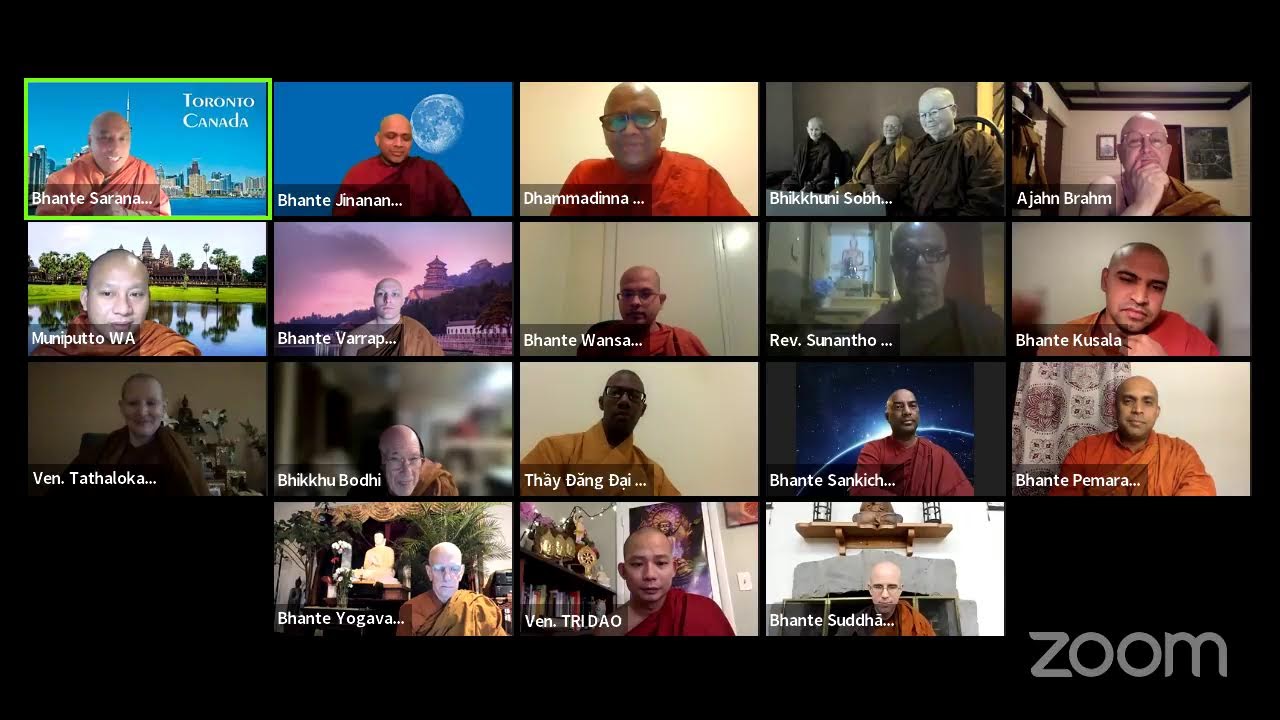![]()
Ajahn Brahm stressed “not to force anything” throughout and his is a particular teaching approach leading to jhana. However the suttas state that in the stages of the full path perspective there is a place for forceful restraint:
"In the same way, there are these gross impurities in a monk intent on heightened mind: misconduct in body, speech, & mind. These the monk — aware & able by nature — abandons, dispels, wipes out of existence. When he is rid of them, there remain in him the moderate impurities: thoughts of sensuality, ill will, & harmfulness. These he abandons, dispels, wipes out of existence. When he is rid of them there remain in him the fine impurities: thoughts of his caste, thoughts of his home district, thoughts related to not wanting to be despised. These he abandons, dispels, wipes out of existence.
“When he is rid of them, there remain only thoughts of the Dhamma. His concentration is neither calm nor refined, it has not yet attained serenity or unity, and is kept in place by the fabrication of forceful restraint. But there comes a time when his mind grows steady inwardly, settles down, grows unified & concentrated. His concentration is calm & refined, has attained serenity & unity, and is no longer kept in place by the fabrication of forceful restraint.”—AN 3.100 i-x
I’ve seen Ajahn Brahm say he believes this teaching on forceful restraint is overemphasized and that’s why he underemphasizes it. If you want to tag Ajahn Brahmali I’m sure that he’d be happy to explain this view because he shares it with Ajahn Brahm. Ven. Brahmali also mentions it in samma-vayama in his recent Satipaṭṭhāna workshop. This is more of an emergency brake if you’re about do something and a moment of force will save you from bad consequences.
For me setting the conditions for slipping into jhana and leading to enlightenment makes more sense than maintaining a force of will until you hit jhana. Especially since the path the nibbana is conditioned then setting up conditions for enlightenment aligns nicely with paṭiccasamuppāda more than pulling the emergency brake every time you see the slightest curve in the road.
Thank you for the comment. This is not to be confused with the short term tactic described in MN 20. The sutta makes clear this is not the case and that forceful restraint is a long term necessity up to the late stages of the path. In the beginning stage outlined by the Buddha-to-be in MN 19 it is the origin of one of the great endeavours of right effort, integral to the path.
“Whenever thinking imbued with sensuality had arisen, I simply abandoned it, dispelled it, wiped it out of existence.”
Again it is necessary to put the parochial Bodhinyana view into the broader perspective, and that jhana teaching is a separate area having different demands, just as the Vipassana organization has an idiosyncratic approach. The solution to the age old debate between serenity and insight lies in accepting both but being clear about which is which. In “Mindfulness Q&A with Ajahn Brahm” this was discussed relating to AN 4.170 (59.50 m). The different roles of serenity and insight are stated in AN 2.30.
" "These two qualities have a share in clear knowing. Which two? Tranquillity (samatha) & insight (vipassana).
"When tranquillity is developed, what purpose does it serve? The mind is developed. And when the mind is developed, what purpose does it serve? Passion is abandoned.
“When insight is developed, what purpose does it serve? Discernment is developed. And when discernment is developed, what purpose does it serve? Ignorance is abandoned.”
The wisdom component of the noble eightfold path is comprised of right view and intentions. Tranquillity removes the emotional defilements of anger and desire, opponents of right intentions. Insight develops the intellectual nature of right view, so development of wisdom is a two-pronged enterprise.
AN 3.100 i-x and AN 4.170 use the same terminology and are referring to the same stages of practice.
“Then there is the case where a monk’s mind has its restlessness concerning the Dhamma well under control. There comes a time when his mind grows steady inwardly, settles down, and becomes unified & concentrated. In him the path is born. He follows that path, develops it, pursues it. As he follows the path, developing it & pursuing it — his fetters are abandoned, his obsessions destroyed.”—AN 4.170
“When he is rid of them, there remain only thoughts of the Dhamma. His concentration is neither calm nor refined, it has not yet attained serenity or unity, and is kept in place by the fabrication of forceful restraint. But there comes a time when his mind grows steady inwardly, settles down, grows unified & concentrated. His concentration is calm & refined, has attained serenity & unity, and is no longer kept in place by the fabrication of forceful restraint.”—AN 3.100 i-x
In practice forceful restraint must be employed up until the stage the mind becomes malleable and responsive, this is simply a fact of conditioned existence:
“The gold, having been blown on again & again to the point where the impurities are blown away, is then refined, free from dross, pliant, malleable, & luminous. It is not brittle, and is ready to be worked.”
